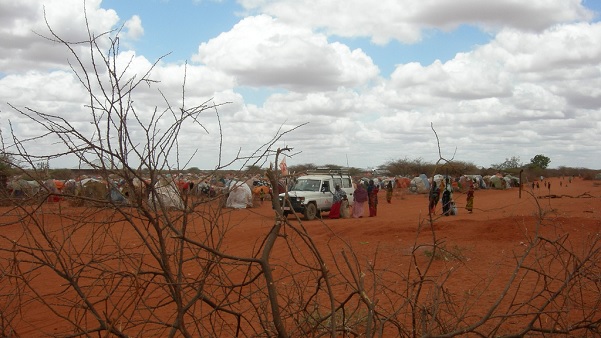
The international community and the Government of Ethiopia must increase funding urgently or the humanitarian success story of 2016 might be overshadowed just one year later by a story of acute crisis.
By Omar Abdi and Ramiro Armando de Oliveira Lopes da Silva (Daily Maverick)
This past month we have met countless women and children in the Somali region of Ethiopia who have made astonishing efforts to combat the debilitating drought that is afflicting the area. We saw families displaying incredible strength and resourcefulness. What we didn’t see was a humanitarian catastrophe like the ones that happened in generations past, because the progress made by these families mirrors that made by Ethiopia in response to food insecurity and drought over the last two decades. Ethiopia now has both the determination and the ability to help its people cope better with a disaster.
And yet as we saw firsthand, Ethiopia’s much celebrated development progress could be at risk in the wake of these successive droughts.
Over the last 20 years, the Government of Ethiopia and the international community joined efforts to improve conditions for millions and millions of Ethiopians. Today a concerted and urgent response is required if these families are to avoid a humanitarian crisis, a quarter of a century later.
In 2016, Ethiopia’s highlands were battered by drought amid the worst El Nino in generations, but managed to avoid a major catastrophe through a well-coordinated response, led by the Ethiopian Government with support from the international community. The country had only begun to recover when a new drought struck the country’s lowlands. The Somali region, which lies in the east of Ethiopia, has been the hardest hit by the effects of these recurrent droughts, with over 30 per cent of the region’s population now requiring food assistance.
The current rainy season in the lowlands appears to be failing as well. As a result, food insecurity throughout Ethiopia is forecast to rise sharply from the current 7.8-million people in the next few months. An estimated 303,000 children are expected to suffer from severe acute malnutrition – the type that makes a child nine times more likely to die of diseases including acute water diarrhea and measles. An estimated 2.7-million children, pregnant women and breastfeeding mothers will be diagnosed with moderate acute malnutrition in drought areas; without urgent action, the condition of many of those children could deteriorate into severe acute malnutrition, a life-threatening condition that is harder and more expensive to treat. It is likely that needs will further increase in the coming months, compounding the current problems.
Read the complete story at Daily Maverick
——
See also:
- Drought Mitigation: Lessons from Ethiopia
- Forecasters Say Drought May Linger in Ethiopia
- More than One Million Children Have Fled Escalating Violence in South Sudan
- Investing in Resilience Helps Families Find Hope in the Face of Drought in East Africa
- Minister James Wharton: UK Will Stand by People of Ethiopia Affected by Severe Drought
